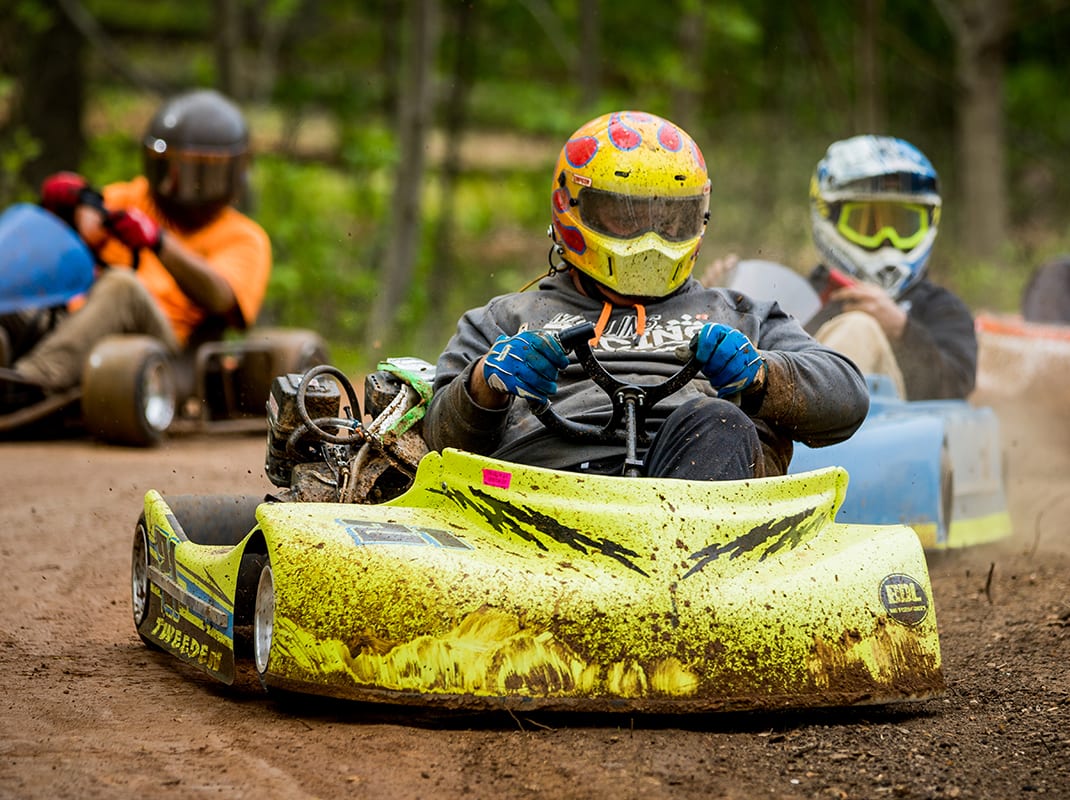Another racer who took the time to build his own track is Nick Panitzke, a Minnesota-based asphalt late model racer who finished third in the 2019 NASCAR Whelen All-American Series national standings.
In Panitzke’s case, he and his father-in-law chose to build a small dirt oval in order to give his son, Cam, a place to practice.
“This year I decided to not exactly step away from racing myself, but change my tone on it a little bit,” Panitzke said. “This is going to by my kid’s first year racing. We scrambled right at the end of last year and right after my racing was over in October, we scrambled to find him a go-kart that he could race the last race with, and he loved it. So this year we were going to go full-steam ahead.
“His first races were going to be at the end of this month but with the stuff going on with the virus, his racing is being postponed,” Panitzke continued. “We figured what the heck, if we can’t be out racing, we might as well get him some seat time. So we decided to build a dirt track at our race shop. It seemed like a no-brainer.”
It ended up being an easy project for the family as Panitzke’s father-in-law is in the excavating business. They had the equipment, the space and the dirt, so it didn’t take them very long to build a race track.
“It took about a week to really get it right,” Panitzke said. “We staked out the track and had him (Cam) turn some laps in the grass before we ever did anything. All we did all week was spread it out around the track. We even added a little banking to it.
“My father-in-law wanted it to look as nice as possible, so in the corners he hauled in some black dirt and laid it down on the outside of the banking so it tapered off and he can grow grass on the outside of it ,so it’s not just a weedy mess.”
Ryan Burrows, the owner of After Hours Fabrication and a longtime member of the racing community as a car and chassis builder, said the dirt track on his property started off as a place for his children to race four-wheelers and motorcycles.
“It had jumps and all that stuff in it,” Burrows explained. “Then when all this (COVID-19) stuff hit, that spot was just kind of sitting there and we weren’t doing anything with it. I decided to take the tractor and level it on out so we could play with some go-karts on it.
“It’s a little tiny thing, probably 75 to 100 yards long and probably 50 yards across,” Burrows went on to say. “It’s been a blast. With my son racing, he hasn’t had a chance to go do any racing. It gives him a little outlet I guess and it gives me a chance to go out there too. It’s been fun.”
While each of the aforementioned tracks are a bit different, the one thing that is the same for those that built them is a newfound respect for those who prepare dirt tracks for competition each and every week during the racing season.
“It’s been a learning curve for sure,” Burrows said. “It’s definitely not like you just go out there and blow it off and get going. Every time you want to play you’ve got to take a piece of equipment out there and get to work. Now I understand why some dirt tracks don’t do an open test or a weekly test.”
So while racers around the country may not be able to hit the track at places like Knoxville, Williams Grove or Perris, a handful of them are finding ways to race — even if it’s just for fun.
